#system design
Explore tagged Tumblr posts
Note
How do game developers decide what scale of numbers their system will use, I.E. how large the “base” numbers are? For example, in MTG a 15/15 creature is a world ending menace while in Yu Gi Oh a 300/200 creature, Skull Servant, is noted on the card’s flavor text to be individually weak. What are the advantage of using large numbers versus small ones and vice versa?
The size of the number affects how things feel to the player. When it comes to system design, what really matters is how many hits it takes to defeat an opponent. However, humans also have feelings associated with big and small numbers relative to the "normal" expected number. The relation of the number to the "norm" is what makes something feel big or small within the game. The base numbers exist primarily for a game to differentiate itself from other games.
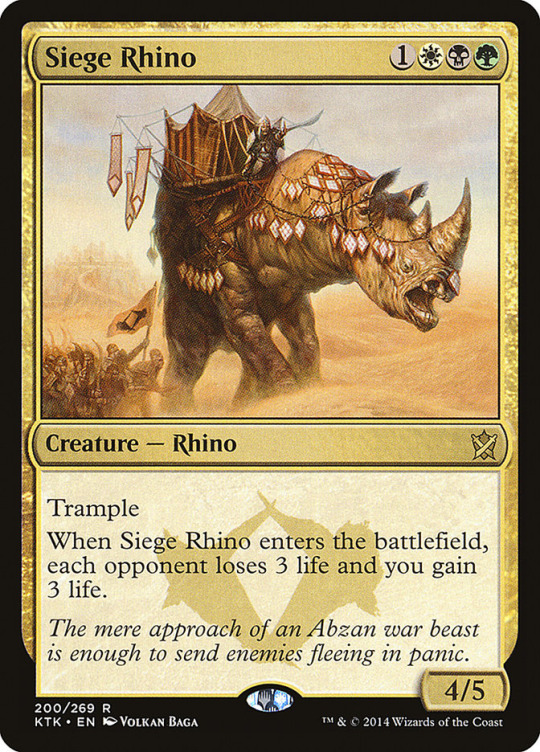
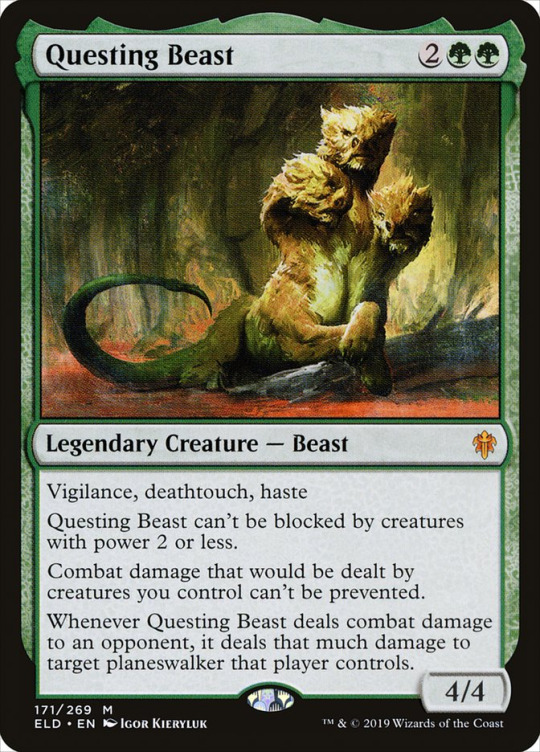
Let's take a look at Magic first. The majority of creatures in Magic are somewhere between 0/1 and 5/5, meaning that their (unanswered) presence typically means an opponent will die within some number of turns (usually 5 or more). Their size relative to each other gives players a strong sense of relative strength too - a 1/1 is much weaker than a 4/4 and needs some kind of help in order to survive a fight with one. This makes any card significantly larger than a 4/4 feel much stronger like the 15/15 world ending menace.
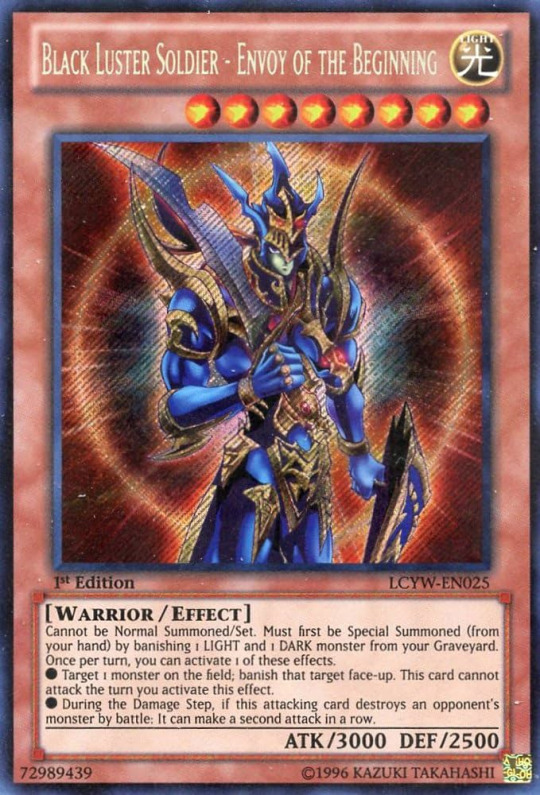
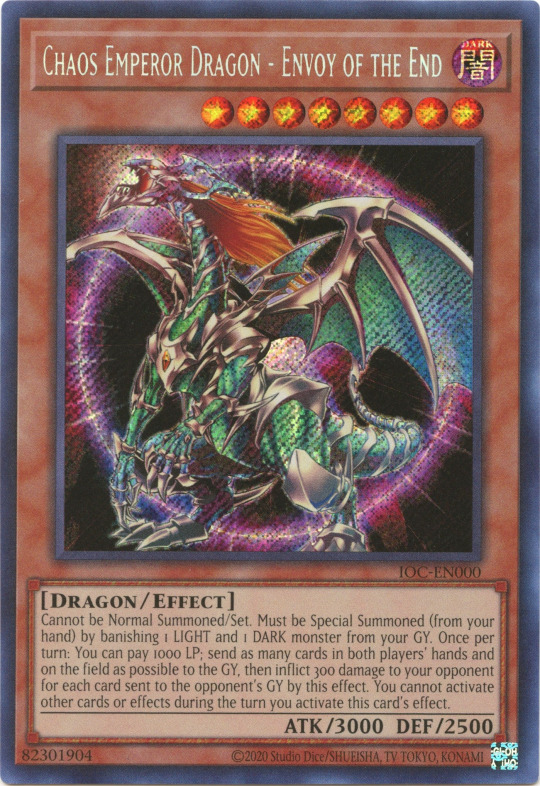
YuGiOh started after Magic and immediately needed to differentiate itself from its competitor in order to establish itself as its own game. The entire scale is different - life points are measured in the thousands and monsters have attack points in the thousands as well. Most normal summoned monsters have an attack power of around 2000 at most, and special summoned or tribute summoned monsters tend to top out at 3000-3500. This means that a player can usually withstand maybe two turns of hits from a powerful top-end monster, but can only survive maybe four turns from a single unanswered monster. This generally makes YuGiOh's individual cards larger plays than Magic's - they are larger relative threats than most Magic cards.

If YuGiOh had started with its numbers at 1/100th of where it started (e.g. players start at 80 life, attack power for Blue Eyes White Dragon was 30, etc.), it would have felt a lot more like Magic and likely not have felt as different. But since everything is in the thousands, player brains immediately grasp that they aren't playing the same game anymore - everything is at a completely different scale (even though the overall numbers relative to each other are similar in terms of number of cards played per turn, number of turns per game, etc.). The numbers within the game establish the relative power of the cards to each other. The baseline numbers tend to be there to differentiate the game from competitors and set an overall feeling for the player as to the sense of scale the game is.
[Join us on Discord] and/or [Support us on Patreon]
Got a burning question you want answered?
Short questions: Ask a Game Dev on Twitter
Short questions: Ask a Game Dev on BlueSky
Long questions: Ask a Game Dev on Tumblr
Frequent Questions: The FAQ
34 notes
·
View notes
Text
A Triad for Bosses
The Three S's
I had a realisation about Dark Souls.
This is a design insight, and I think it’s one that’s applicable to TTRPGs.
Some Dark Souls bosses (a lot of people’s favourites), essentially have three methods by which you can beat them: 1. Skill |Just outright pracice and precision letting you take a small enough amount of damage to survive while dealing a large enough amount of damage to kill. 2. Strength | Whether through stats or a power solution (either being 10 levels high enough or using a damage type the boss is weak to). 3. Solution | You “Solve” the combat before it begins, either through an item that trivialises the fight or a puzzle that outright bypasses it. These “Three S’s.” can of course mix and match, and I think the Eldemonsoulsbornekiro games (sorry) lean on Strength as a primary pillar, Skill as a close second, and Solution as a surprise tool they occasionally pull out, but I was considering how these principles could and could not be applied to TTRPGs. So... Do they?
First, they require some adaptation. TTRPGs don’t have the bounding boxes that video games do, nor do they maintain as much of a balance between elements like player skill and character build. What adjustments do we need to make?
Well, while Skill certainly continues to exist in the TTRPG space, dice luck can have a very large dilutive effect on one’s ability to express Skill. Skill also, I’d argue, has much more of a direct impact on “Strength” in TTRPGs than it does in video games. Building a character here has, again, weaker bounding boxes than a preprogrammed game.
Strength can vary wildly depending on the style of the TTRPG, but regardless of the chosen book table play tends to be farther away from insurmountable/trivial encounters than video games due to GM tailoring. If you’re in an encounter, there’s typically both an expectation for you to engage with it and knowledge that it won’t waste your time.
And Solution is interesting. Depending on the GM or the story scenario, this may be all but impossible. But it might also be the primary focus of your game. Every fight you take meant to be solved, every combat a puzzle. Also typically, the higher allowance for Solution expression, the more Skill expression has space to shine. After all, someone’s gotta find those solutions!
With weaker availability for Skill expression, a usually tighter box on Strength expression, and Such a wild variation in Solution expression, what kinds of incentives and rewards can we now build into our campaigns? - We can build in Power rewards for their Skill in character creation. - We can prompt Skill growth by facing our parties with difficult tasks they can still achieve. - We can create narrative or prompt creative focus and reward Skill by putting all of our eggs into the Solution basket, waiting for our parties to “Figure it out.”. - We can create a feeling of immense resistance (or outright despair) by using combats that require more Strength. ...and more! Balancing encouragement and reward between these three pillars to create your style of encounter, I would say, covers just about every design you’ll ever field.
Think about the Three S’s next time you’re building an encounter! Hopefully this can provide a solid framework for your next brainstorm.
22 notes
·
View notes
Text
System Design Basics Summary

3 notes
·
View notes
Text
Capstone #11: Final?
<-<- FIRST || <- PREV || NEXT ->
First off, Capstone is done done and just waiting on graduation. Next up, our capstone won us a little award! We did our little poster session and showed off the assembly. But lets show off something I wish I had done under the cut
The Arduino doesn't have the ability to process more than one thing at a time, it doesn't even have threads. It's single core, single thread. So when the gantry wants to move, it needs to do all the math of where to go, then move the stepper motors. The entire time where it's calculating, the motors aren't moving, and the entire time the motors are moving, the cpu is sitting there doing jackshit nothing. And it has to do this for each and every stepper step until it reaches the end position. (The speed of this is dramatically slowed. The actual stepper step takes about 3 milliseconds, and the calculation takes maybe a few clock cycles (idk exactly how long, but lets just say ~0.005 milliseconds)). Point is, 3 milliseconds is an eternity to a cpu.
In that 3 milliseconds we could do a lot of things. Lets use time more efficiently...
In the project I had coded the gantry to not use a queue and event handler. This is mostly because of a lack of hindsight. But had I, it would something like this: The "math" process does the math and drops the result into the queue, the "gantry" process picks up the next thing in the queue and executes it. In the meantime while the cpu is waiting for the motor to reach its position, there's plenty of time to do plenty more math and start filling the queue. Because math is fun and it can't wait to do MORE math (:
All this makes this run far faster by doing 2 things at once. It gives you more control over how fast the gantry moves, because its speed depends on how fast you read from the queue. Once the queue is filled you could even spend that time doing literally anything else, like blinking lights, updating screens, or read from sensors.
There ARE even more clever things you can do, but this is just one that I feel like I totally could have done if I wasn't already nearly done by the time I thought of it
2 notes
·
View notes
Text
Sample: Diablo IV Feature Overview (Diablo IV)
One more Diablo thing, then we'll move on. I promise. 😊
While I left Blizzard in early 2020 prior to Diablo IV's launch, I was involved heavily with the announcement plans and reveal at BlizzCon 2019. That was a cathartic triumph of an experience for me—members of the community can tell you I was crying in the audience when the trailer played, because I'd been holding this secret in for so long.
At this stage, I was pretty much the only North American community manager dedicated to Diablo, handling D3, Immortal, and now D4 communications (I did work with a kickass social media manager, though, so I wasn't totally alone). We were in the process of hiring a new manager above me, which was all well and good; I really didn't want to be a manager (and still don't) because I enjoy writing and creating.
I wrote pretty much every article covering Diablo IV on reveal day (and for the whole of BlizzCon 2019), in addition to managing all our influencer activations onsite, posting on social live from the event, and generally ensuring Diablo stuff was running smoothly each day of the event. If I didn't pause to say hi to you, that was why. 😅 Probably the biggest, busiest BlizzCon I was ever involved in.
This and all the other blogs around that time are preserved by the Wayback Machine - I picked this one because it had the best performance out of all our blogs. People really enjoy details, after all.
Warning: this is a very long one under the cut; if you're playing Diablo IV right now, how has the game changed since reveal?
*****
Diablo IV Feature Overview
We know you’re all eager to learn as much about Diablo IV as possible, and we’re incredibly excited to share everything with you! To get you started, we’re taking a comprehensive look over the features and details we’re sharing at BlizzCon 2019 and answering a few of the most common questions you undoubtedly have about the next mainline entry in the Diablo franchise.
*****
The Classes of Diablo IV
At launch, Diablo IV will have five unique character classes, each bringing its own distinct mechanics that embodies their respective fantasy. Today, let’s talk about the first three we’re bringing to life: the Barbarian, the Sorceress, and the Druid.
Barbarian
A brutal, physical warrior, the Barbarian roams around the battlefield constantly, dishing heavy damage and wielding an array of powerful weapons with ease. With the Arsenal system, Barbarians can swap between different types of weapons, such as from a heavy two-handed mace to a pair of sharp, agile hand axes, depending on the situation, skill, and your player needs.

Barbarians will be able to haul around four total weapons and swap between them dynamically at any time. You’ll also be able to assign specific weapons to different skills, allowing advanced players even greater depths of customization.
Sorceress
Harnessing potent elemental powers, the Sorceress is brimming with all your favorite flavors of magic. Fragile but destructive, this high-risk, high-reward hero weaves between Fire, Cold, and Lightning. Her mastery of magic is an iconic and indelible part of the Diablo power fantasy, and we’ve only continued to build upon this sturdy foundation.

You’ll be able to control and dominate enemies with a new Chilling mechanic. The more Cold damage you deal, the more foes will be slowed, frozen, and eventually shattered by your attacks.
Druid
The master of shapeshifting makes his triumphant return to Sanctuary! Seamlessly changing forms from human to Werebear to Werewolf, his command over earth and storm magic is second to none.

Different skills utilize different forms, and entirely new skills like Cataclysm will annihilate hordes of enemies with the unbridled fury of nature itself. Storm magic persists on the battlefield, so you’ll be able to unleash torrents of lightning, wind, and rain before shifting forms to ravage foes.
*****
Skill Points & Talent Trees
Diablo IV will feature permanent character progression as well as personal customization. To accomplish this, we’re reintroducing both Skill Points and Talent Trees.
Skill Points will be earned by leveling up as well as by hunting down rare tomes out in the world. You can choose to spend Skill Points as you go, save them up to invest more heavily in skills that are unlocked at higher levels, spread them out between multiple skills, or focus on your favorites to make them more powerful.

Each class also has a dedicated Talent Tree for further character customization, though your choices may come at a cost. For example, the Sorceress concentrate on skills that emphasize mobility or Lightning damage while passing up more powerful Cold powers in the process. The Druid might choose to become a tanky melee combatant by investing in Werebear talents, though this doesn’t prevent him from using his Werewolf or Caster skills; they’ll just be less optimized. Where you want to specialize is up to you, and your Talent investments will reflect these decisions.
Talents get more powerful the further down the tree you travel, so make sure you’re choosing wisely as you grow!
*****
Open World & Multiplayer Gameplay
Unlike previous Diablo games, Diablo IV is fully open world. This means you can explore any of the five distinct regions in any order, at any time, and travel seamlessly between them. Sanctuary will become a living, breathing place to explore and plunder. With introductions like monster ecologies tied to regions, a shared player world with public events, and town points of interest that act as social hubs, Diablo IV will feel a little less lonely (though no less bleak).
The distinctive regions we’re introducing are connected contiguously, for streamlined adventuring from area to area with no loading interruptions.
Scosglen
Home to the Druids, this verdant and rainy land is heavily forested and borders the coast. Werewolves lurk in the thick foliage and the new monster family, the Drowned, crowd the haunted coastlines, waiting to drag unsuspecting victims to a watery doom.

Fractured Peaks
Snowy and secluded, a sect of devout priests find refuge in the isolation of this high mountain range. They seek enlightenment while remaining unaware of the horrors that dwell in the dark cave complexes below.


Dry Steppes
The unforgiving, harsh environment of the Dry Steppes is home only to the hardiest—or desperate—souls. Be warned; the denizens of this land will do anything to survive, resorting to anything from petty banditry to savage cannibalism.

Hawezar
Witches and zealots call this snake-infested swampland home, scouring the murky depths for ancient artifacts. The unaware will quickly find themselves in dire straits.


Kejhistan
As we’ve seen from previous visits to Alcarnus and Caldeum, the desert shadows of Kejhistan make excellent cover for a group of rising cultists. They quietly plumb abandoned ruins, seeking power to aid the return of the ancient Prime Evils.
To Party or Not to Party
Whether you’re prone to partying up or an independent adventurer, Diablo IV will have a way for you to play.
When it comes to the Campaign, you’ll be able to play through the entire story at your own pace or alongside friends, with progress syncing up to the party leader so there’s no question about what’s been done or what’s next on the checklist.
While most of the world is socially open, certain, smaller parts of each region are campaign specific. Once the campaign objectives have been completed, those areas will also dynamically open to other players. This means you might see another party of adventurers pass you by or you could organically stumble into an event or World Boss other players are already battling. You won’t need to party up to enjoy these activities; whether you decide to join the fray or continue your own journey, that decision remains yours.
Delving Dank Dungeons
Dungeons will be separate, instanced experiences. While you won’t see wandering adventurers alongside you as you delve an abandoned ruin, you can opt to bring up to a party of four players in to tackle tougher challenges for greater rewards.
As has become hallmark to Diablo, Dungeons are randomized experiences, including both their layouts and the events that might occur within them. They can be interior or exterior landscapes, may mix and match between different tilesets, and offer totally seamless exploration; moving from one level or scene to another is now a natural, loading screen-free process.
We’re also introducing Dungeon Objectives, which help guide your adventure and offer greater rewards and increased danger. As you complete Dungeon Objectives, the goals you have will continue to update, and the Dungeon itself might respond by sending tougher enemies and challenges your way. Each Objective has been custom designed to give their Dungeons their own identity and character, and there are hundreds of dungeons with tons of events, ensuring each delve is a unique one!
We’re also evolving endgame Dungeons by building them around three pillars: variety, strategic depth, and player agency. One new system we’re sharing today is what we’re calling Keyed Dungeons. By finding a key out in the world of Sanctuary, you can upgrade an existing Dungeon into a special endgame version with increased difficulty, greater rewards, and dungeon affixes. Between the natural randomization, knowing the strength and affixes you’re going to face, and choosing your skills and equipment in advance, we’re hitting all three of these pillars for a unique, ever-evolving endgame.
Monsters of Sanctuary
You know where you’re going to kill things, and how you’re going to kill them. But what, exactly, is threatening you? Let’s look at some of the enemies you can expect to face in Diablo IV.
Monster Families
To breathe new and realistic life into the world of Sanctuary, we’re taking a fundamentally new approach to how we create and design monsters. Each monster is now part of a Monster Family, which usually includes a handful of different enemies based around a theme and location. Check out one of our new families, the Drowned.
The Drowned are watery entities that can be found around the coasts of Scosglen. You won’t find them anywhere else in the world, and if you’re looking specifically to hunt them down, you’ll need to travel to find them. Each member of the family has a specialty or signature ability that synergizes with other members of that family, becoming stronger when they’re fighting together.
Reimagining Affixes
Affixes work a little differently this time around. While you’ll still see expected effects like Molten, you might be surprised at how the Multishot affix changes up strategic gameplay depending on which enemy it affects.
For example, take the Fallen family. A Multishot enchanted ranged Fallen might throw three projectiles at you, as you’d probably expect. Put that Multishot enchantment on a Fallen Shaman, though, and your priorities change as he begins to revive three of his friends at a time instead of just one. Affixes should change the way you look at and strategize against your enemies, as well as offer different gameplay depending on the monsters they affect.
Ashava and World Bosses
If you got your hands on our BlizzCon demo or watched our gameplay trailer closely, you may have noticed a massive new addition: Ashava. Ashava, the first of our new World Bosses, is an ancient demon lurking below Sanctuary who will take more than just one mighty hero to fell.

Not only will you need to group up (or at least join several other players) to challenge Ashava, but you’ll want to pay close attention to her abilities and carefully make use of your skills. Avoid her deadly strikes with the baseline Evade ability and leverage the new Stagger mechanic in your favor. Rather than having bosses be immune to crowd control effects, they can instead become Staggered, losing some of their capabilities or powering down once a certain threshold has been met. When battling Ashava, Staggering her will shatter her arm blades and greatly diminish the range of her whirlwind attack, making her a little less deadly for you and your friends.
*****
Itemization
It’s not a Diablo game without tons of new loot to find, and we want to share a broad, top-down approach to our itemization. First, you’ll see the familiar return of most item categories:
Normal -> Magic -> Rare -> Legendary/Set -> Ancient -> Mythic
In Diablo IV, we want Legendaries to be just as, if not more, powerful than Set items. We don’t want you to feel beholden to one particular class set to play your chosen style. Ancient items are a system we’ll be leveraging for Seasons, but we’ll dig into that at a later date. As for Mythic items, these will be so powerful you’ll only be able to equip one of them at a time, so choose wisely!
When it comes to combat statistics, we’ve simplified the math problem. Players should spend more time thinking about stats that change how they play rather than solving arithmetic. Attack and Defense will be your bread and butter; one stat for increasing your damage, and one stat for decreasing damage taken.
More complex stats like Attack Speed or Melee Damage Reduced will still exist; however, these are stats that can change your approach to combat in more than a numerical way. While they might still increase your damage output or reduction, they do so in ways that make you think about the battlefield or which skills work best in different situations.
Some items will also boost individual Talents, effectively acting as bonus points spent in them. If you want to go all-in on Pulverize, you can do so with Skills, Talents, and items!
Legendary Powers
Legendaries should fundamentally change the gameplay of abilities, and that’s exactly the approach we’re taking in Diablo IV. The best way to illustrate this is to review a few powers we’ve worked on for the Sorceress skill Teleport.
One Legendary might increase your defense shortly after you Teleport, making it a great defensive escape tool. Another might increase your damage for a short period of time after you Teleport, making you more likely to want to jump into the fray. Still another removes the Teleport cooldown entirely, but now sends you in a random direction, so you have high, but unpredictable mobility. Lastly, we have a power that adds a burst of area damage to enemies upon your arrival.
Combining all these Legendaries can result in some pretty wild and satisfying results, and it’s up to you (and perhaps a little luck) to decide which ones to combine.
Runes
Runes are back and better than ever! Runes in Diablo IV translate to another layer of gear customization. They come in two types: Conditions and Effects. It’s as easy as socketing in one Condition and one Effect to create your own Legendary power. There will be a great variety of both types of Runes and we can’t wait to see what sorts of combinations you come up with.
*****
Frequently Asked Questions
Have a question not covered above? Check out the FAQ below.
Q: Will there be trading? A: Yes. While we’re still working on the details, we know this is a huge community request and we want to reintroduce some level of trading while still preserving the loot-finding experience.
Q: Will there be clans? A: Yes! Clans will be a key feature in Diablo IV.
Q: Will there be PvP? A: Yes. Some areas of the world will offer opt-in PvP experiences where you’ll need to watch your back while you adventure.
Q: Will there be Seasons? A: Yes! Seasons will be returning, and we’d like them to heavily impact your approach to gameplay. More details to come.
Q: Will there be Hardcore? A: Yes! We’ve loved this feature ever since it started as a player-created and self-imposed challenge in the original Diablo.
Q: Is Diablo IV coming to consoles? A: We are working with our partners to bring Diablo IV to both PC and console, including Xbox One and PS4. We have no additional platforms to announce at this time.
Q: What about [insert game feature we haven’t yet mentioned here]? A: We know you have a lot of questions about what the final form of Diablo IV will look like. While we’ve been hard at work on all the art, story, and systems we’ve shown so far, we’re far from done and still quite early in the development process. What you’ve seen this weekend is a high-level overview. As we continue working to get the next iteration of Diablo into your hands, it’s likely many things will change.
*****
A Lot to Share, More to Work On
Diablo IV is early in development, but we just couldn’t wait any longer to share with you where we are so far. While we don’t have any news on when we’ll be moving into our first public access stage, we will be keeping up with quarterly updates available here on the Diablo community site and mirrored on our forums for your easy access.
We’ve got a lot of work to do and even more hell to raise. We can’t wait to see you on the other side!
#community management#Diablo#Diablo IV#Diablo 4#D4#System Design#Game Design#Game Development#Blizzard Entertainment#BlizzCon 2019#BlizzCon
2 notes
·
View notes
Text
Introduction
Hello, we are final year students from the National Institute of Design, Haryana. We're documenting our system design project here.
hehe.
4 notes
·
View notes
Text
Systems Thinking
Singla Rice Mills
Hello from Group 3 - The Huskies B)
This is a blog to document the everyday progress of our Systems Thinking Research and you are welcome to give your valuable feedbacks every step of the way!
The group includes Akriti, Akshaya, Gautham, Karthik, Ketaki, Madhumanti and Prerna.
Day 1 - 21.08.2024
First day started with brainstorming for the domain. The group decided to focus on a topic within the agriculture sector, as Haryana is well-known for its agricultural activities.
Initially, we planned to conduct our research at a sugar mill. Upon visiting the site, we learned that the sugarcane harvest season hasn’t started yet, and the factory wouldn’t be operational until November.



After exploring other nearby agro-based industries like disposable leaf plate makers, poultry farms, wheat factories, and honey bee farms, we finally connected with Singla Rice Mills.


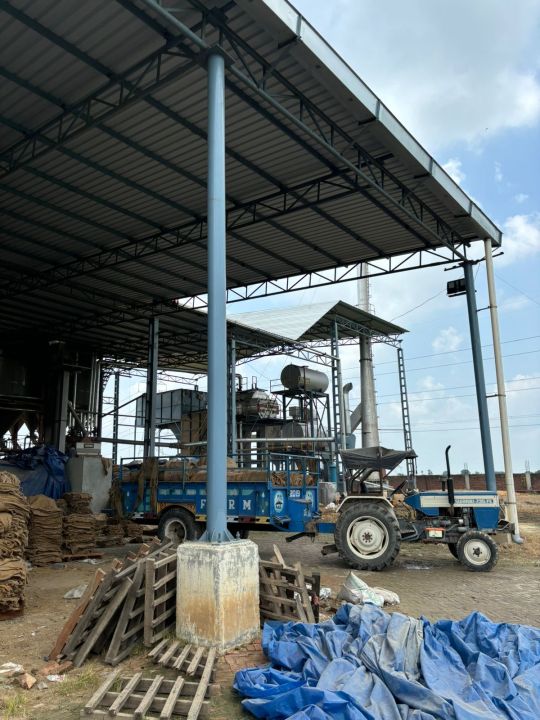
The CEO, Harsh Singla, was very welcoming and gave us a comprehensive overview of the business and its technical aspects. He explained the rice processing stages, discussed the factors that directly impact the business, and provided a tour of the facility.


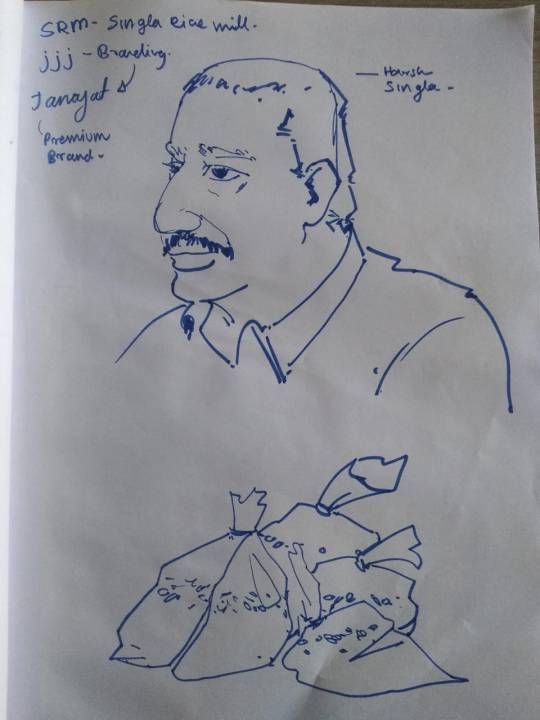
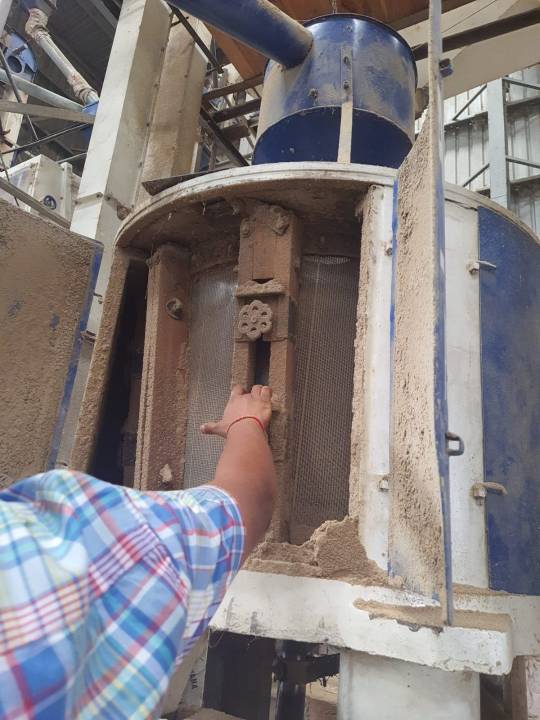
We also saw samples of different rice categories obtained after processing. The first day was full of valuable insights that will guide our research moving forward.
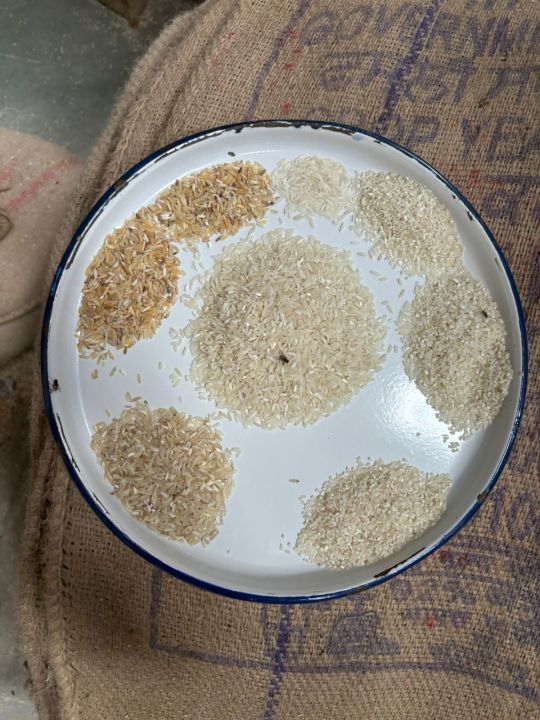

Thanks, see you tomorrow :)
#business#systems thinking#design#rice#industrial design#communication design#textile design#field trip#system design#research#day 1
2 notes
·
View notes
Text
Bad faith often drives the law of unintended consequences.
Writers: Great concept to play with in your worldbuilding.
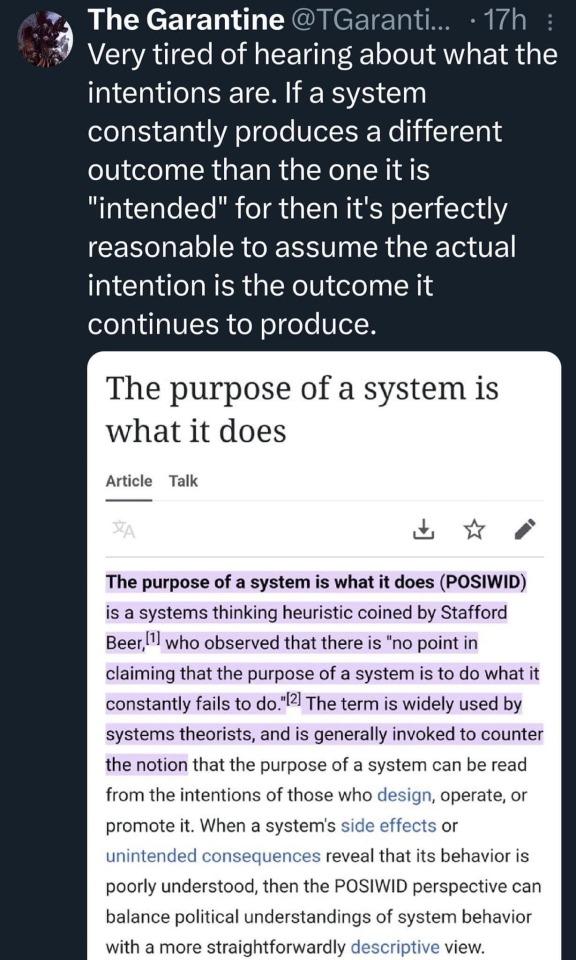
this is so on the nose
just adding (since it seems to have stirred some people up) that obviously this is not an absolute - it just points to how some oppressive systems (for example) rely on bad faith to cover for their systems doing what they're really intended to do by claiming that they're still in progress - but there are plenty of other less bad faith examples too that are more to do with poorly thought out or poorly implemented plans
[ID: post by The Garantine quoting the start of a wikipedia article
Very tired of hearing about what the intentions are. If a system constantly produces a different outcome than the one it is "intended" for then it's perfectly reasonable to assume the actual intention is the outcome it continues to produce.
beginning of quoted article below reads as follows:
The purpose of a system is what it does
The purpose of a system is what it does (POSIWID) is a systems thinking heuristic coined by Stafford Beer, who observed that there is "no point in claiming that the purpose of a system is to do what it constantly fails to do." The term is widely used by systems theorists, and is generally invoked to counter the notion that the purpose of a system can be read from the intentions of those who design, operate, or promote it. When a system's side effects or unintended consequences reveal that its behavior is poorly understood, then the POSIWID perspective can balance political understandings of system behavior with a more straightforwardly descriptive view.
ID ends]
39K notes
·
View notes
Text
As AI tools evolve faster than institutions can adapt, education systems are entering a state of strategic dissonance. This post examines the feedback loop mismatch, systemic lag, and why “AI strategy” won’t be enough.
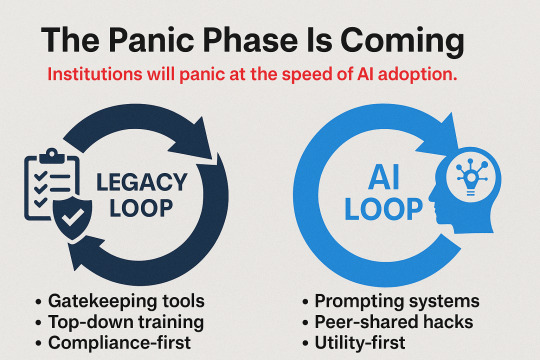
View On WordPress
#AI Feedback Loops#AI in education#Assessment Futures#digital literacy#education policy#education reform#Generative Tools#Institutional Collapse#Strategic Foresight#System Design
0 notes
Text
11 Lessons I Didn’t Know I Was Signing Up for When I Built My First SaaS
When I set out to build my first SaaS product, I thought the hardest part would be writing clean code. I figured the technical decisions would carry the most weight — choose the right stack, organize the database, write good tests, ship features. I had no idea I was about to get a crash course in business, legal strategy, pricing, communication, and product thinking. Here are 11 lessons I…
#.NET development#audit logging#authentication and authorization#bootstrapping software#C programming#custom SaaS platform#data modeling#deadline management software#developer productivity#enterprise SaaS#indie hacking#legal compliance software#legal software#Legal Tech#multi-tenant architecture#net-core#RBAC implementation#SaaS startup#software infrastructure#software-architecture#SQL Server#startup engineering#Substack for developers#system design#technical founder
0 notes
Text
System Design for Tech Interviews in 2025

When it comes to landing top-tier technical roles in 2025, system design interviews are no longer optional—they are a standard, crucial part of the interview process. Whether you're aiming to be a Software Engineer, Engineering Manager, Staff Engineer, or Technical Program Manager, system design is often the deciding factor between candidates who merely write good code and those who can architect scalable, reliable, and maintainable systems.
This article is for anyone—whether you're switching from a development background, looking to scale up to a senior role, or targeting full stack or backend-heavy jobs. Let’s break everything down from the ground up.
TL;DR:
System design is a must for mid and senior tech roles in 2025.
Learn the basics: scalability, availability, databases, queues, caching.
Use a structured approach: clarify, sketch, deep-dive, optimize.
Practice real-world problems and focus on trade-offs.
Leverage courses and peer support to grow faster.
Why System Design Interviews Matter Today
Companies expect engineers not just to write clean code, but also to make smart architectural decisions. Think about building platforms like Instagram, Uber, or Netflix. It’s not just about knowing Python or JavaScript—it’s about understanding how to handle millions of users, store billions of rows of data, keep things secure, and make sure services don't go down.
That’s where system design comes in.
Roles where system design is critical:
Full Stack Developers (Mid and Senior)
Backend Engineers
Technical Leads
Staff and Principal Engineers
Technical Program Managers
Engineering Managers and Directors
Whether you're interviewing at a startup or a FAANG company, if the role involves owning large components or leading a team, system design rounds will be part of your interview process.
What a System Design Interview Involves
System design interviews are typically 60–90-minute discussions where you're asked to design an end-to-end architecture for a real-world system. But it’s not about memorizing one right solution—it’s about how you:
Understand requirements (both functional and non-functional)
Break down big problems into manageable components
Justify the trade-offs in your choices
Communicate and think like an architect
Common questions asked in system design interviews:
Design a URL shortener like TinyURL
Design a scalable chat app like WhatsApp
Design a ride-hailing platform like Uber
Design a Netflix-style video streaming service
Design a newsfeed system like Facebook or Twitter
How to Prepare for System Design Interviews in 2025
Let’s walk through a structured plan to prepare, especially if you’re new or feel underconfident about this round.
Step 1: Strengthen Your Fundamentals
Before jumping into mock interviews, get your basics right:
Load Balancers – How do they distribute traffic?
Caching – When and how to use Redis, Memcached, etc.
Databases – SQL vs NoSQL, sharding, replication
Queues – Why use Kafka or RabbitMQ?
Scaling Patterns – Vertical vs horizontal scaling
CAP Theorem – Tradeoffs between consistency, availability, partition tolerance
If you’re enrolled in a System Design Course Online, these topics are usually broken down in a beginner-friendly format with visuals and real-world examples.
Step 2: Follow a Structured Framework
When asked to design a system, break it down step-by-step. This shows clarity and maturity.
Clarify Requirements – Don't jump to solutions. Understand scope first.
Define API Contracts – Define user actions and system responses.
Sketch High-Level Architecture – Think services, databases, APIs.
Deep-Dive into Components – Explain how each part works (auth, storage, feed).
Address Bottlenecks – Where can things go wrong? What are your trade-offs?
Summarize Design – Review everything, address future scaling or optimization.
Practicing this structure in mock interviews or study groups—especially with peers from a Full Stack Developer Course in Hyderabad or similar programs—can be incredibly helpful.
Step 3: Practice with Real-World Scenarios
Practice questions that reflect systems seen in modern SaaS or consumer platforms. Focus on:
Handling millions of users
Ensuring low-latency performance
Managing data replication and consistency
Dealing with real-time features like notifications or location updates
Resources like Grokking the System Design Interview or YouTube videos from experienced engineers can be valuable. But don’t just watch—draw, design, discuss.
Why Structured Courses Can Help
If you’re switching from a purely coding or frontend background, courses give you a structured path, mentorship, and accountability. For example:
1. System Design Course Online
Learn at your own pace
Real-world case studies
Weekly assignments to reinforce learning
2. Full Stack Developer Course in Hyderabad
Hands-on experience building systems
Projects that simulate interviews
Exposure to backend, database, deployment—everything you’d need for design interviews
Investing in the right learning path not only boosts your chances in interviews but also helps you perform well in the role once you land it.
System Design Interviews Today: What Companies Expect in 2025
Hiring teams are evolving. In 2025, many companies have dedicated rounds for system design, especially from SDE-2 level onwards. Here’s what they’re specifically looking for:
Product thinking: Do you understand how users interact with the system?
Scalability trade-offs: Are you choosing the right tools and models?
Communication: Can you explain your ideas clearly to teammates or stakeholders?
For technical program managers and senior roles, these rounds can include architecture review scenarios, where you're asked to improve an existing design or identify bottlenecks.
You Don't Have to Be Perfect, Just Prepared
If you’ve ever been intimidated by system design, you’re not alone. It’s abstract, open-ended, and different from coding rounds. But with the right approach, consistent practice, and a learning environment that supports you—you can absolutely crack it.
If you’re already preparing through a System Design Course Online or even a Full Stack Developer Course in Hyderabad, keep going. You’re building long-term engineering maturity.
If you haven’t started yet—now is a great time. These rounds aren’t going away, and mastering them can unlock 10x better roles, salaries, and career growth.
0 notes
Note
In lieu of the RTS 'Battle Aces' getting axed, would you talk about how to ethically but meaningfully monetize RTS games?

All monetization is, at the core, a value proposition. You offer me a thing at a given price, then I decide whether the thing is worth it to me to spend the money to get it. There are things we can do to adjust this perceived value, but there is no coercion involved - the buyer always has the option of walking away. The closer the value proposition is to the edge of what is acceptable, the "harder" the bargain feels. The more value the buyer feels she is getting relative to the cost, the better a deal feels. In my opinion, ethical monetization is where all sides of a given deal feel like what they are getting out of the deal is "worth it".

This is observable in the vast majority of complaints about game-related costs - the recent kerfuffle about Borderlands 4 possibly costing $80 to buy in, the price of specific items (e.g. EVE Online's famous $80 monocle), the price of DLC, and so on. We can tell that this is a pricing/value issue and not a principle issue because the vast majority of complaints about monetization are not about the monetization existing, but the specific prices involved. The vast majority of complaints about gaming monetization could be assuaged by lowering the price to a more acceptable level to that particular user.

We must realize that players are not monolithic. Some players must have the latest and greatest new thing like the players who preorders and buys the collector's edition or the player who immediately buys the latest DLC at launch. Some players are more value-minded and are willing to wait for a better price like the players who wait for a sale or who wait for a DLC bundle to come out. Some players are budget-oriented, allowing for only so much spending over a given time frame. Some players have their own specific favorites they are willing to spend on, like content for a particular character or a specific game mode they enjoy playing. There are also cultural factors, like how it is taboo in Western gaming culture to sell/buy power in game, or how Lunar New Year is an enormous sale times in Eastern gaming cultures. I will also point out that things aimed at one group may not be received well by other groups. In all situations, the opinions of the actual customers significantly outweigh the non-customers. This should be for an obvious reason - converting a non-paying customer to a paying customer is significantly more costly than retaining a paying customer.

Things will be "ethically" monetized when people can collectively agree on what "ethical" monetization actually is. Until that day comes, we'll probably continue the way we've been - we offer various things and we see if players are willing to spend. If enough players spend, development continues. If not enough players spend, we adjust and hope that we can make the value proposition compelling enough for enough players to spend. If not enough players spend for long enough, the game gets shut down and there's some combination of moving on to a new project or loss of jobs.
[Join us on Discord] and/or [Support us on Patreon]
Got a burning question you want answered?
Short questions: Ask a Game Dev on Twitter
Short questions: Ask a Game Dev on BlueSky
Long questions: Ask a Game Dev on Tumblr
Frequent Questions: The FAQ
14 notes
·
View notes
Text
Expectations, Descriptions, Names
This is a bit of a shorter one than before, but I've found it interesting how many times I've seen the release of a system or a new piece of content within a system be met with hostility, even long after initial exposure, due to some breakdown in understanding for what something is meant to be.
What do I mean by this? I'll use a couple of examples, one old and one new, from Pathfinder 2e. Funnily enough, they're both from the Cleric class: The Warpriest doctrine, right from the start, focused on being more defensible than its Cloistered counterpart at the cost of some of its spellcasting potency, and was long derided as a cheap, unsatisfying alternative. In what I've heard from those who disliked it, this is mostly due to a miscommunication that starts with the name. People expected a Cleric capable of "war"; a damage-dealer and front-line fighter. What the subclass actually was (and remains, to this day) is a way to massively improve your survivability on the front lines, not necessarily your damage-dealing capability or even combative prowess. Not that it doesn't have any of that, but it's ultimately secondary to the Warpriest's attempt to emulate an old-school mace-and-shield, chainmail Clerical role in a party. You retain your full spellcasting suite, and the fact that the spells are weaker incentivises your focus further towards protective aspects of your character, honing in on a utility and support role without the cloth caster trappings of low AC and health. The Battle Harbinger, recently released in Lost Omens: Divine Mysteries, seems to be going down a similar pipeline, at least if the initial reactions I've seen online are in any way representative of general attitude (which they aren't always). The Battle Harbinger gives up not only their spellcasting potency, but most of their suite, and in return gains combative efficacy- ability to hit enemies with a weapon. But they don't gain any significant damage boosts, and their "Battle Auras" (buffing or debuffing auras they can cast and sustain with their unique feats) are still resource-limited by their spellcasting resources (though retain full, or even better, potency than standard spellcasting). Battle Harbinger's role ends up being one of offensive support, and notably still not damage. They can hit with the best of them, but they don't receive the damage-dealing bonuses that are crucial to the "standard martials" damage-dealing roles- and this is pretty clearly intentional, due to their ability to use scrolls and significantly buff themselves and their teammates. Yet, player reaction has skewed negative. What do you mean the Battle Harbinger can't hit as hard as a full martial?
People end up missing the playstyle and role defined and supported for these subclasses, instead projecting their own desires for the name or the concept onto it and being disappointed when it doesn't pan out. I'm left wondering what's more important here when it comes to player response- the name, the flavour text, or the mechanics themselves. And I think it might be skewed towards name and flavour text more than one would assume. Would the responses have been the same were the subclasses named "Heavily Armoured Support Cleric" and "Rallying Offensive Support Cleric"? They're certainly less evocative names than "Warpriest" and "Battle Harbinger". Where does one draw the line on these things? Ultimately, this will all be up to the writer to weigh and decide. But it's worth thinking about next time you name or describe something- what image are you trying to present? What image might your chosen words conjure? If there's dissonance between the two, is it worth conceding ground to mend that gap?
Little bits of TTRPG and player philosophy like this are what I live for when I'm not considering the mechanics themselves. May your quests be fruitful, friends.
9 notes
·
View notes
Text
Having trouble with stateful vs stateless architecture because i genuinely don't understand the benefits of stateful architecture. Reminder to look up some examples.
2 notes
·
View notes
Text
The system is moving. Not just AI, not just business—intelligence itself is in play.
#AI Governance#Business Intelligence#Competitive Advantage#Cybersecurity Strategy#Data-Driven Strategy#digital transformation#Ecosystem Architecture#Ecosystem Orchestration#Emerging Technologies#future of work#GTM Innovation#hidden layer strategy#Intelligence Fabric#leadership#Monetization Strategies#Networked Intelligence#Non-Linear Value Creation#Preemptive Strategic Foresight#Silent Influence#silent influence in business#Strategic Inflection Point#Strategic Intelligence#System Design
0 notes